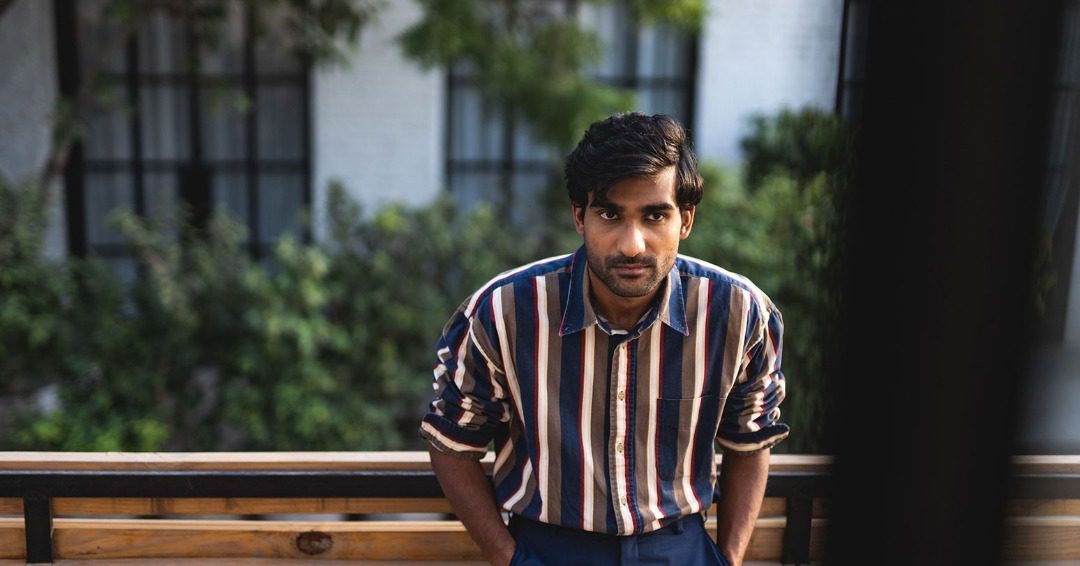(August 13, 2021; 9.40 am) One balmy afternoon in May 2012, Indo-Canadian artist Jonita Gandhi exploded on YouTube with the acoustic cover of Pani Da Rang. Her velvety voice, the soothing melody and distinctive tone serenaded millions across the globe. A YouTube star was born.
Her covers catapulted her to fame and to the studios of Bollywood music composers, making her one of the few Indo-Canadians to have made it big in the Hindi film industry. What started on YouTube soon translated into big offers from music composers. In a short span, Gandhi had reserved a spot amongst Bollywood’s best playback singers.
Love for music began with her dad
Born in New Delhi, Gandhi moved to Canada with her family when she was just 9 months old. Growing up in Brampton, she fell in love with Indian music at a young age, thanks to her dad who was a part-time musician. Seeing the potential in Gandhi, her father encouraged her to perform at community events where he played the keyboard. So at 7, Gandhi began her musical journey.

Jonita Gandhi with her dad in a throwback photo
“Growing up, I always had Indian music playing around the house. My father was a musician and he played the keyboard for a lot of community events; he would listen to a lot of old Bollywood numbers from the retro era. Listening to those songs played at home, I would hum along to the tune and when my father heard me, he realized that I had potential and so he encouraged me to practice and perform with him on shows and it just took off from there,” she told The Hindu.
Keeping up with her riyaz and formal training in Western and Hindustani classical singing, Gandhi graduated in health science and business from the University of Western Ontario. But her heart was in music, and at 16, she auditioned for Canadian Idol. However, she failed to get past the audition rounds. That did not deter Gandhi from pursuing her passion.
The biggest discovery – YouTube
In 2010 it was YouTube that came to Gandhi’s rescue, and made her a pop sensation. Back in the day, YouTube videos were far from the sleek and stylized versions one sees today. Instead they were home-made amateur videos put together by youngsters who were happy experimenting with the medium. Gandhi was one such youngster who recorded a video in the basement of her home and posted on YouTube.
In a conversation with Hindustan Times, she said,
“I was too shy. If I had to sing, everybody had to turn around or I would close my eyes so that I don’t see anybody. Maybe that is why YouTube caught my fancy. You can do it on your own, whenever you feel like, and perfect it before the world gets a glimpse of it.”
Viral sensation
It was here that she stumbled upon composer, singer and pianist Akash Gandhi with whom she collaborated for the cover of Pani Da Rang which went viral in no time.
Soon, Gandhi became an overnight sensation. The popularity helped her belt out more covers like Suhaani Raat and Tum Hi Ho which made her portfolio unique in its own way. With each cover, she kept winning hearts and followers.
It was her North America tour with singer Sonu Nigam that prompted her to consider singing as a professional career. “That experience made me think seriously about giving a professional career as a singer a shot. With two degrees in hand and a solid backup plan to fall back on, I thought why not. Thankfully, I toured with Sonuji for the first few years while I was in India and simultaneously worked on making a name for myself,” she told Darpan Magazine.
If her cover of Yeh Honsla garnered a great response on YouTube and a retweet from original music composers Salim-Sulaiman, her 2012 cover of Christmas Carol Silent Night caught music maestro AR Rahman‘s fancy.
Bollywood calling
In no time, Gandhi was in Mumbai and singing her first Bollywood song for composer duo Vishal Dadlani and Shekhar Ravijani‘s Chennai Express. This big break took her to the studio of AR Rahman for Imtiaz Ali‘s Highway — this was just the beginning of her long innings in Bollywood.
Despite her big Bollywood break, Gandhi was subjected to prejudices owing to her accent.
“Most people would hear me speak before they heard me sing and assume that I couldn’t pronounce lyrics correctly because of my Canadian accent. This was a barrier for me at first,” she added.
However, Gandhi wasn’t ready to give into the preconceived notions and won everyone over with her talent. Interestingly, the 31-year-old now sings in eight languages.
In the last eight years with songs like Yaadon Mein (Harry Met Sejal) and The Breakup Song (Ae Dil Hai Mushkil) to her credit, Gandhi has earned the reputation of one of the best playback singers in the industry. For someone from Canada who’d had no connections within Bollywood, Gandhi learnt the ropes of the business on her own and has come a long way.
Global citizen
Despite her success in the Indian film industry, Gandhi hasn’t restricted herself to it. She has been collaborating with independent artists from India and abroad for her singles. For someone who calls herself the citizen of the world, she continues to go wherever her voice takes.
This May, the popular singer was in for a surprise when she found herself on one of the billboards of Yonge-Dundas Square in Toronto as part of Spotify‘s North American campaign for empowering Asian artists and their contribution to the global music space. Interestingly, she was the only Indo-Canadian singer among several Asian artists featured on the list. “To see myself on the iconic billboard seemed a far-fetched dream. It is an honor to celebrate my South Asian roots in my home country,” she told IANS.
View this post on Instagram
It’s not easy to make a mark in a place like Bollywood that survives on cut-throat competition, and especially when you are an outsider. But Gandhi is proof that talent transcends borders. From a YouTuber to playback singer, Gandhi has come a long way on her own steam and is an inspiration for millions to make it big in Bollywood.
Also Read: Nav Bhatia: Sikh Canadian is the first-ever fan to be inducted in NBA Hall of Fame



